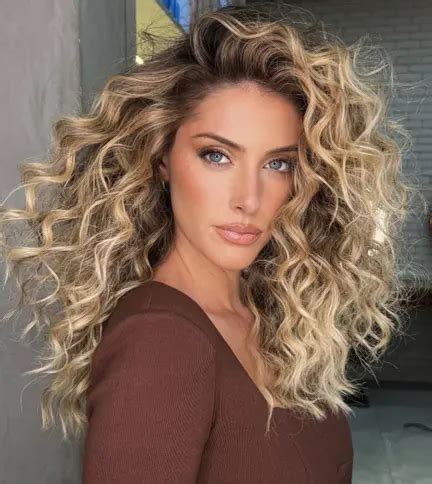The allure of caramel balayage hair lies in its ability to mimic the golden hour’s radiant glow, leaving you with sun-kissed strands that exude warmth and luminosity. Originating from the French term “balayer,” meaning “to sweep,” balayage is a hair coloring technique that involves hand-painting lightener onto select sections of hair to create a gradual, blended effect. Caramel tones, specifically, embody a rich and inviting shade of brown that dances between golden blonde and warm amber, adding depth and dimension to any hair color.

The Science Behind Caramel Balayage
Caramel balayage involves a chemical process that selectively lightens the pigment in hair strands. Bleaching agents, predominantly hydrogen peroxide, weaken the hair’s cuticle, allowing the lightener to penetrate the cortex and break down the melanin pigments. This process results in a reduction of pigment concentration, creating the lighter caramel hues.
Caramel Balayage for Different Hair Colors
The beauty of caramel balayage lies in its versatility, complementing a wide range of hair colors and tones.
-
Brunettes: Caramel balayage adds a touch of warmth to brunette locks, creating depth and dimension. The contrast between the darker base color and caramel highlights enhances hair movement and texture.
-
Blondes: Caramel balayage can subtly enhance blonde hair, adding a warm, honey-like glow. It can brighten and refresh blonde tones, preventing them from appearing too cool or ashy.
-
Redheads: Caramel balayage frames red hair with a flattering contrast that enhances the natural warmth and vibrancy. The golden undertones of caramel balance out the red pigments, creating a captivating look.
The Benefits of Caramel Balayage
-
Low-maintenance: Caramel balayage is a relatively low-maintenance hair color. The blended nature of the technique means that there is less noticeable root regrowth, requiring touch-ups every 3-6 months, depending on hair growth and desired level of contrast.
-
Versatile: Caramel balayage can be customized to suit your individual style and face shape. The placement and thickness of the highlights can be adjusted to create a subtle or dramatic effect, from soft, sun-kissed strands to bold, contrasting highlights.
-
Damage-limiting: Compared to other hair coloring techniques, balayage is generally less damaging as it involves selective lightening rather than full coverage bleaching. The hair is hand-painted, reducing the risk of chemical overlap and minimizing the impact on hair health.
How to Get Caramel Balayage: Step-by-Step Guide
To achieve the perfect caramel balayage, follow these steps:
-
Consultation: Schedule a consultation with a skilled colorist to discuss your hair goals, base color, and desired level of contrast. They will assess your hair’s condition and recommend the best approach for your specific needs.
-
Sectioning: The hair is typically divided into sections using clips or foil. The colorist will determine the placement and thickness of the highlights based on your desired look.
-
Lightening: Bleaching agents are applied to the designated strands and left to process for a predetermined amount of time. The timing and strength of the lightener will depend on your hair color and the desired level of lift.
-
Toning: After the hair has been lightened, a toner is applied to neutralize any unwanted yellow or brassy tones and achieve the desired caramel shade.
-
Styling: Once the toning process is complete, the hair is washed, conditioned, and styled as desired.
Tips for Maintaining Caramel Balayage
-
Use Color-Protecting Shampoos and Conditioners: Invest in hair products specifically formulated for color-treated hair to prevent fading and maintain the vibrancy of your caramel balayage.
-
Limit Heat Styling: Excessive heat from styling tools can damage hair and compromise the integrity of the color. Opt for heat protectants and air-dry whenever possible.
-
Regular Trims: Regular trims will eliminate split ends and prevent them from traveling up the hair shaft, preserving the health and appearance of your caramel balayage.
-
Avoid Chlorine Exposure: Chlorine in swimming pools can react with hair color, causing discoloration and fading. Wear a swim cap or rinse your hair thoroughly with fresh water after swimming.
Troubleshooting Caramel Balayage
-
Brassiness: If your caramel balayage develops unwanted yellow or orange tones, consult a colorist to use a toner to neutralize the brassiness.
-
Patchiness: Uneven color distribution can occur if the lightener is not applied consistently. Contact your colorist for a touch-up or corrective coloring session.
-
Over-processing: Over-lightening can damage hair and lead to breakage. Avoid excessive bleaching and stick to regular professional maintenance to prevent hair damage.
Creative Applications of Caramel Balayage
-
Caramel Ribbon Balayage: This technique involves creating alternating streaks of caramel and darker tones, adding a striking contrast and dimension to the hair.
-
Caramel Ombré: Caramel balayage can be blended with a darker base color to create an ombré effect, gradually transitioning from darker roots to caramel tips.
-
Caramel Peekaboo Highlights: Caramel balayage can be subtly placed underneath the top layer of hair, creating an understated yet alluring peekaboo effect.
Statistics and Market Trends
According to a recent study by Allied Market Research, the global hair color market is projected to reach $40.6 billion by 2031, growing at a CAGR of 4.7% from 2022 to 2031. Balayage techniques, including caramel balayage, have contributed to this growth due to their popularity and versatility.
Conclusion
Caramel balayage hair is a timeless and versatile hair color technique that creates sun-kissed, radiant strands. Whether you prefer subtle highlights or bold contrasts, caramel balayage can be customized to suit your individual style and complement your natural hair color. Embracing this hair trend will leave you with a captivating glow that turns heads and ignites your confidence.
